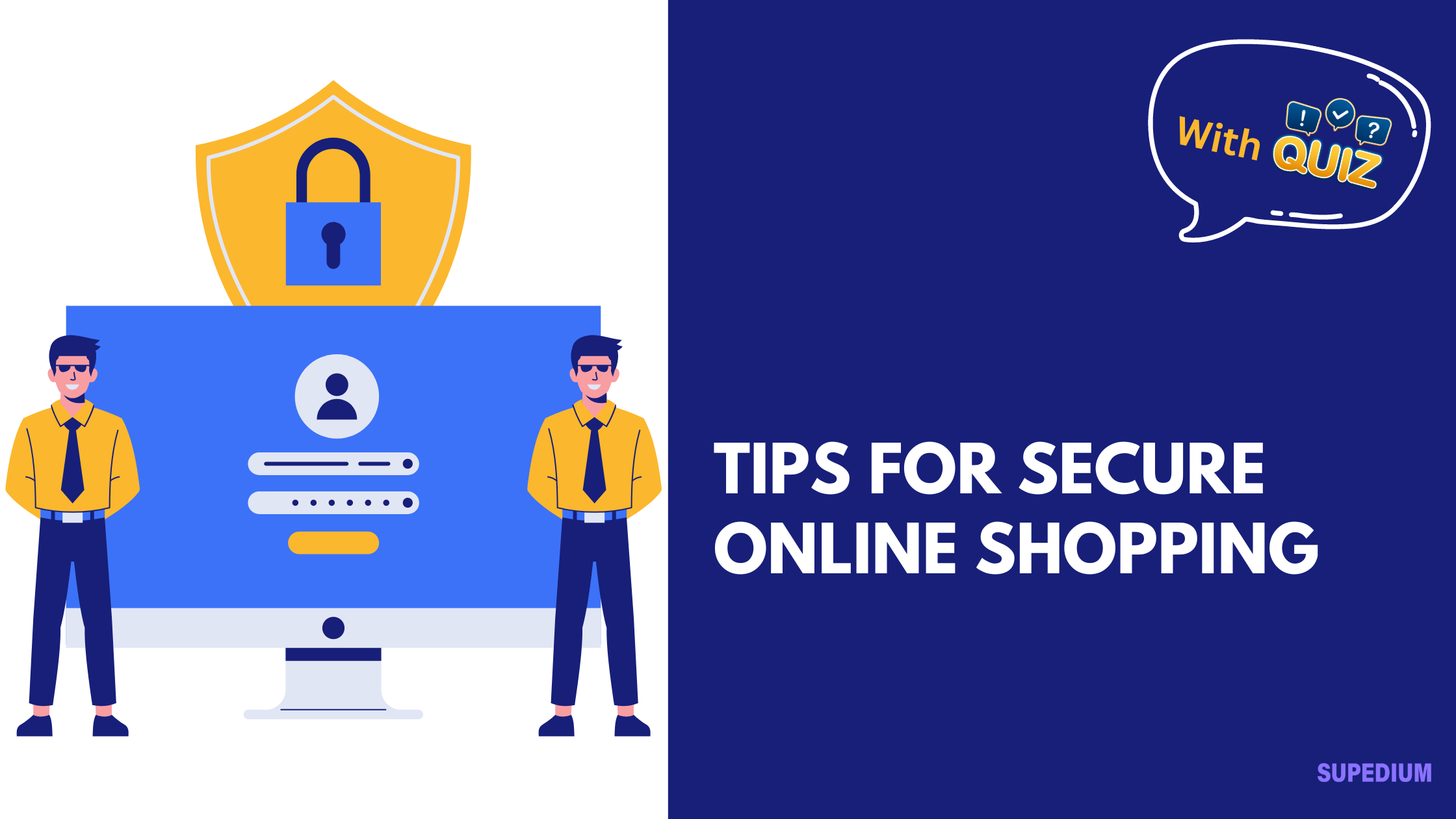Table of Contents
![]()
In today’s digital age, online shopping has become a common and convenient way to purchase goods and services. With the rise of e-commerce, it is crucial to prioritize security to avoid falling victim to online scams and fraud. Here’s a comprehensive guide to help you shop safely and securely online.
Choose Reputable Websites
Verify Website Security
When shopping online, always ensure that the website you are using is secure. Look for “HTTPS” in the URL of the site. The “S” stands for secure, indicating that the website encrypts data between your browser and the server. Additionally, check for a padlock symbol next to the URL in the address bar. These indicators help confirm that the website uses SSL (Secure Sockets Layer) to protect your personal information.
Research the Seller
Before making a purchase, research the seller to verify their credibility. Read customer reviews and ratings to gauge the experiences of previous buyers. Check if the website provides clear contact information and a physical address. Reliable online retailers will often have a customer service section with detailed contact options and an address where they can be reached.
Avoid Suspicious Websites
Be cautious when visiting unfamiliar websites, especially if they offer deals that seem too good to be true. Scammers often create fake websites to lure shoppers with attractive discounts. If a website seems off or lacks sufficient information about the seller, it’s best to avoid making any transactions.
Use Strong, Unique Passwords
Create Strong Passwords
Creating strong passwords is a fundamental step in online security. Use a combination of uppercase and lowercase letters, numbers, and special characters. Avoid using easily guessed information such as birthdays or common words. A strong password should be difficult for others to guess or crack.
Employ Password Managers
To manage multiple strong passwords securely, consider using a password manager. These tools store and encrypt your passwords, allowing you to use unique passwords for each site without the need to remember them all. Look for reputable password managers that offer robust security features and regular updates.
Enable Two-Factor Authentication (2FA)
Two-factor authentication adds an extra layer of security to your accounts. In addition to your password, 2FA requires a second form of verification, such as a code sent to your mobile phone or an authentication app. Enabling 2FA on your accounts can significantly reduce the risk of unauthorized access.
Be Cautious with Payment Methods
Use Secure Payment Methods
When shopping online, opt for secure payment methods like credit cards or payment services such as PayPal. Credit cards offer better fraud protection compared to debit cards, as they often come with additional security features and easier dispute resolution. Payment services like PayPal also provide an extra layer of security by acting as an intermediary between you and the seller.
Check for Secure Payment Processors
Ensure that the payment page you are using is secure. Look for signs such as HTTPS in the URL and the padlock symbol in the address bar during the payment process. Trusted payment gateways like Stripe or PayPal are generally reliable, and using these services can provide additional security.
Monitor Financial Statements
Regularly check your bank and credit card statements for any unauthorized transactions. Promptly report any suspicious activity to your financial institution to address potential issues quickly. Early detection can help prevent further unauthorized charges and mitigate potential losses.
Be Wary of Phishing Scams
Recognize Phishing Attempts
Phishing scams involve fraudulent attempts to obtain personal information by pretending to be a legitimate entity. Be cautious of emails or messages that ask for sensitive information or urge you to click on suspicious links. Look for signs of phishing, such as poor grammar, urgent requests, or unfamiliar sender addresses.
Avoid Clicking on Links
Instead of clicking on links in emails or messages, hover over them to see the destination URL. If you’re unsure about the legitimacy of a link, type the website’s address directly into your browser rather than relying on links provided in emails.
Verify Requests for Personal Information
If you receive a request for personal information, verify its authenticity by contacting the company directly using verified contact information. Avoid sharing sensitive information through unsecured channels like email or text messages.
Keep Your Devices and Software Updated
Update Operating Systems and Browsers
Keeping your operating system and web browsers up-to-date is crucial for maintaining security. Updates often include patches for security vulnerabilities that could be exploited by cybercriminals. Enable automatic updates to ensure you receive the latest security fixes.
Install and Update Security Software
Use reputable antivirus and anti-malware software to protect your devices from malicious threats. Regularly update your security software to ensure it can detect and defend against the latest threats. Many security software programs offer real-time protection and automated scans to keep your system secure.
Use Secure Networks
Avoid conducting online transactions over public Wi-Fi networks, as they may be less secure and more susceptible to interception. If you must use a public network, consider using a Virtual Private Network (VPN) to encrypt your internet connection and protect your data from potential eavesdroppers.
Practice Safe Shopping Habits
Review and Understand Return Policies
Before making a purchase, familiarize yourself with the seller’s return and refund policies. Understanding these policies can help you make informed decisions and avoid potential issues if you need to return or exchange an item. Be aware of any time limits or conditions attached to returns.
Keep Receipts and Confirmation Emails
Save digital receipts and confirmation emails as proof of purchase. These documents can be useful for tracking orders, resolving disputes, or requesting refunds. Organizing these records can also help you monitor your spending and manage your online shopping activities more effectively.
Be Cautious with Personal Information
When filling out online forms, only provide the information that is necessary for the transaction. Avoid oversharing personal details that are not required for the purchase. Be wary of websites that request excessive personal information or seem to have unclear data handling practices.
Conclusion
Secure online shopping involves taking proactive measures to protect your personal and financial information. By choosing reputable websites, using strong passwords, and employing secure payment methods, you can reduce the risk of falling victim to online scams. Staying vigilant against phishing attempts, keeping your devices updated, and practicing safe shopping habits are also essential steps in maintaining your online security.
By following these tips, you can enjoy a safer online shopping experience and minimize the risk of encountering security issues. Stay informed and stay secure as you navigate the world of e-commerce.






Be the first to comment